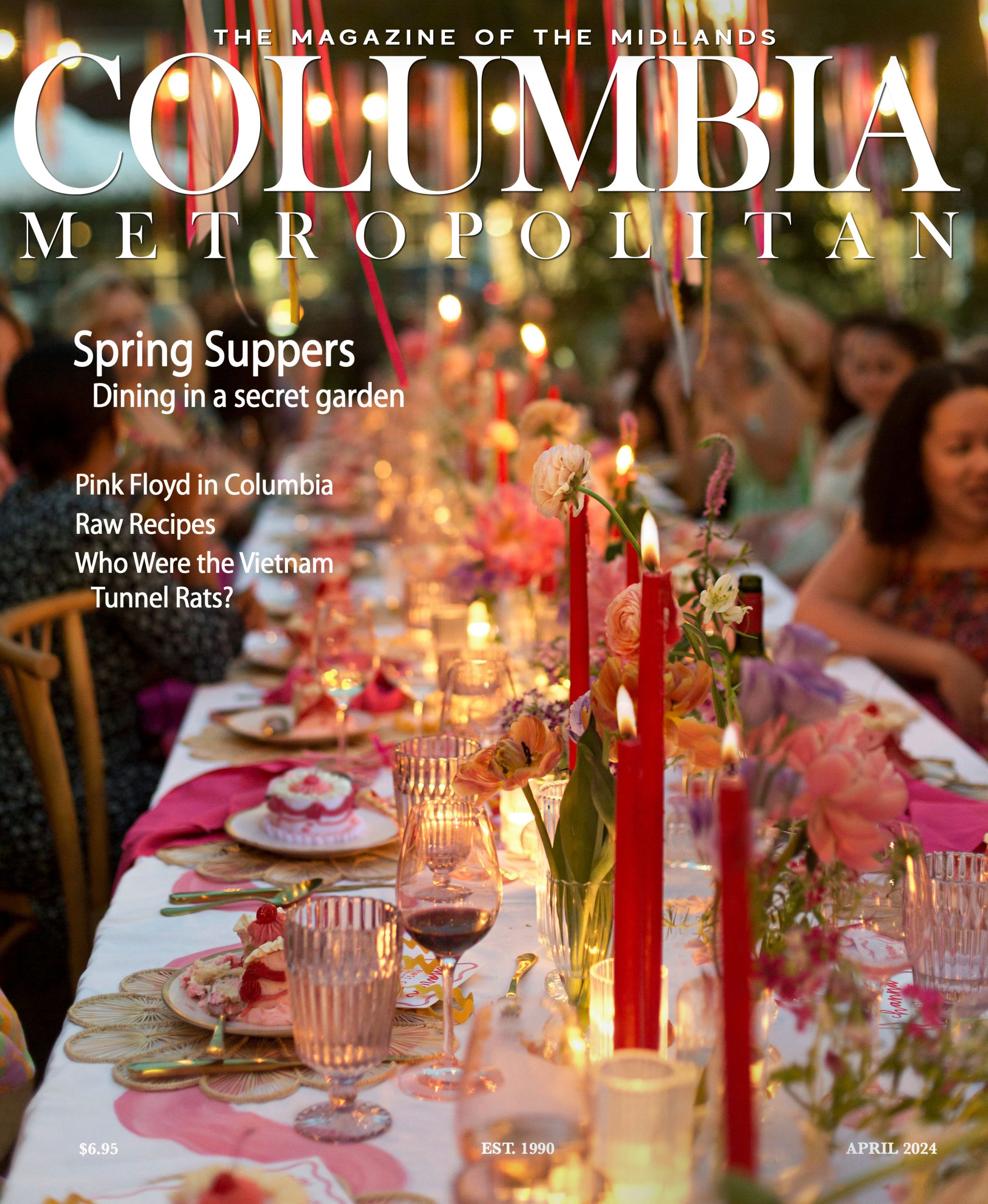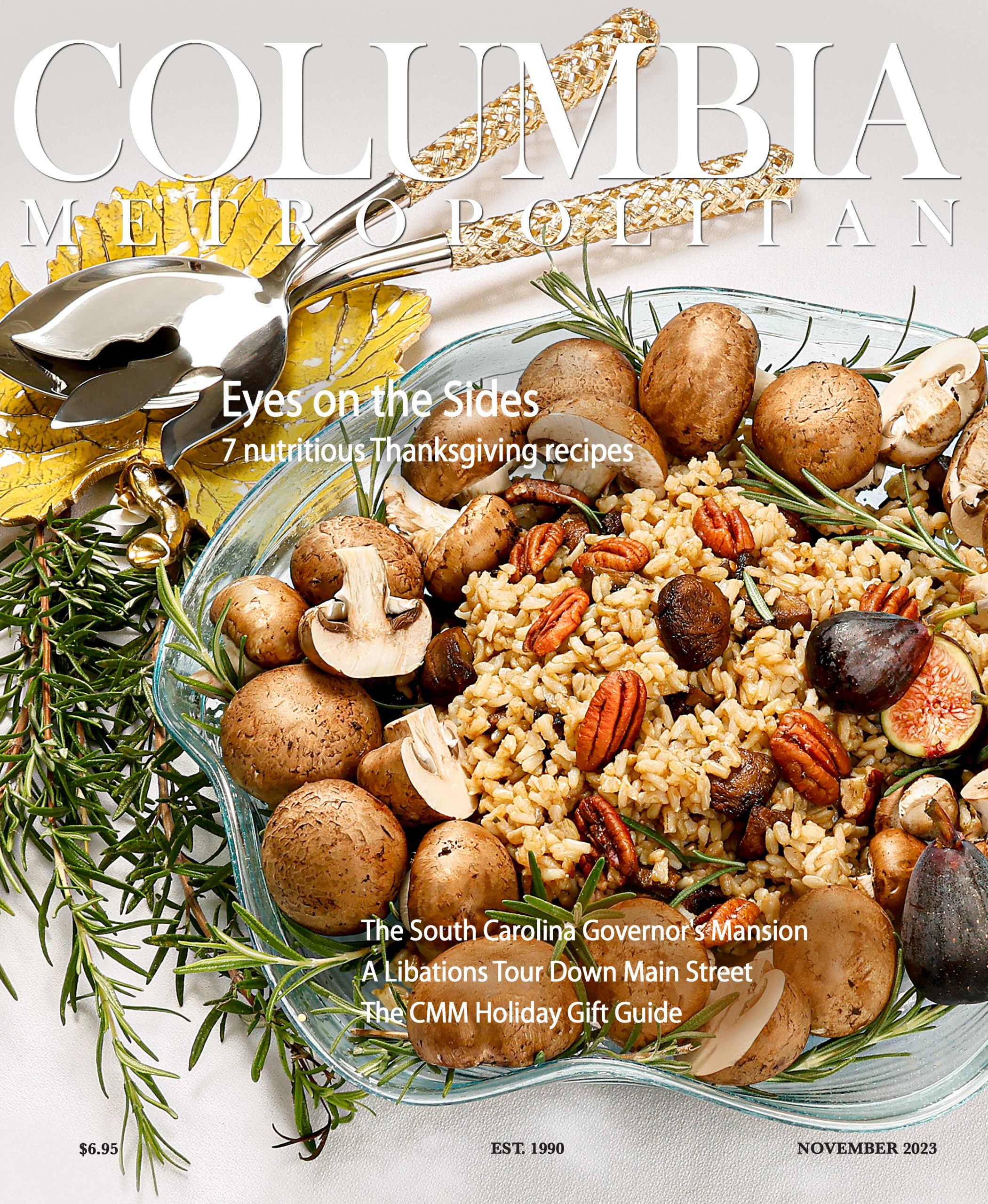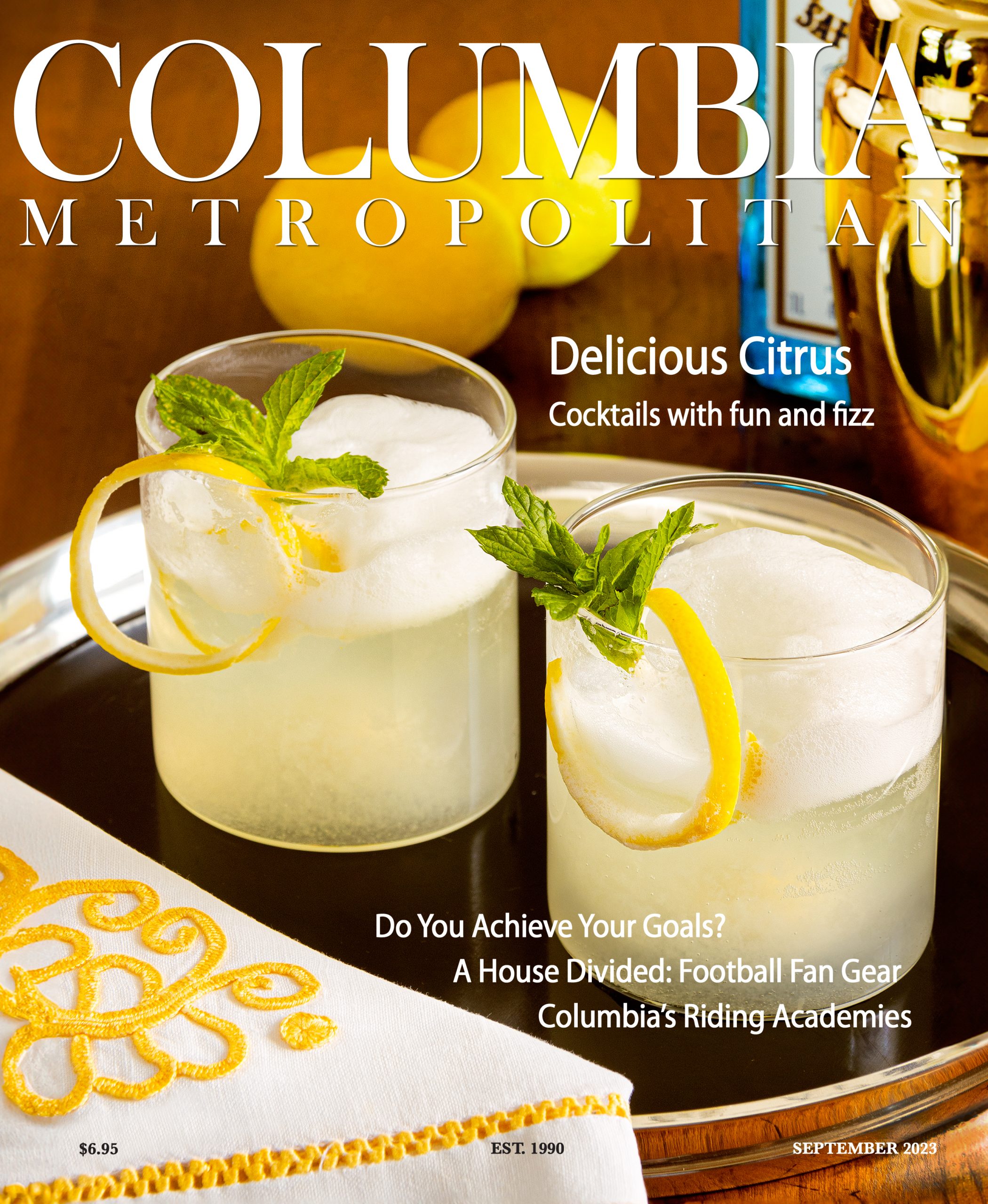
“Spiced Blueberry Mojito” with Captain Morgan Spiced Rum, mint simple syrup, and blueberries, courtesy of Ruth’s Chris Steak House.
Craving a fruity rum drink this summer? If you’re sipping some sassy rum punch, you might be surprised to learn that some of these tropical concoctions have their roots in 18th century sailing expeditions.
Rum was named on the island of Barbados where molasses, a byproduct of the sugar manufacturing process, was fermented, distilled, and turned into a tasty spirit that was cheap to produce and wickedly strong. Instantly popular, rum became a second income stream for the owners of the vast sugar cane fields that covered islands throughout the Caribbean. “Today, Barbados still produces some of the best rums in the world,” says Wilson Oswald, a certified sommelier who is also the director of beverage for Sizzling Steak Concepts, a family-owned restaurant group which includes Ruth’s Chris Steak House – Columbia in its portfolio.
But it was scurvy, a debilitating and deadly disease caused by a lack of vitamin C, that ended up creating the link between rum and summer’s fruit-forward cocktails.
During the Age of Exploration, when Colonists spent months aboard ships and had no access to fresh fruit, scurvy was a true risk. For instance, an estimated half of passengers aboard the Mayflower perished from scurvy as the ship made its way across the Atlantic.
Luckily, by the early 1700s, consuming citrus fruits was found to both prevent and treat scurvy. Although the problem was fairly easily alleviated among the general public, it continued to be a problem for sailors, whose citrus fruit consumption was generally limited to lemons, which were less perishable than oranges. Enter rum, which was not only provided to the British Royal Navy as part of their daily rations but offered enough sweetness to offset the sourness of the lemons. Unlike ale and wine, it wouldn’t spoil, even after months in a hot ship’s hold. Before long, orange juice, sugar, and spice were added to the brew, which was so delicious that it migrated from ship to shore and became the base for tropical cocktails.
During the early 18th century, nearly all the rum exported from West Indian rum-producing islands such as Antigua, Jamaica, and Barbados went to Colonists in North America, who each consumed an estimated four gallons of rum per year. To meet that nearly insatiable need, Colonists made their own rum as well, particularly in New England.
That all changed in the 19th century, when American distillers found that transforming abundant rye, wheat, and corn into whiskey was cheaper than making rum, which required imported — and heavily taxed — molasses.
Rum didn’t surge in popularity again until the 1930s when Ernest Gantt, better known as Donn Beach, opened a restaurant in Hollywood that came to be known as Don the Beachcomber. A charming wanderer who had spent time in the Caribbean, French Polynesia, and other tropical locales before moving to California and picking up work as a set designer, Gantt put his skills to use at his new establishment, creating a South Pacific paradise where customers could temporarily forget the post-Depression world. Since rum was the cheapest spirit available at the time, Gantt mixed up a menu of fruit-based novelty drinks, gave them exotic names, and soon had a following that included Howard Hughes, Charlie Chaplin, and Marlene Dietrich. The concept took Hollywood by storm, spurring a host of imitators such as Trader Vic’s, which Victor Bergeron opened four years after Don the Beachcomber had made its debut. The two establishments kicked off a tiki-bar trend that lasted until the 1970s, when prepackaged drink mixes transformed the surprisingly nuanced fruity delights, whose recipes were top-secret, into artificially flavored, one-dimensional vehicles for cheap rum.
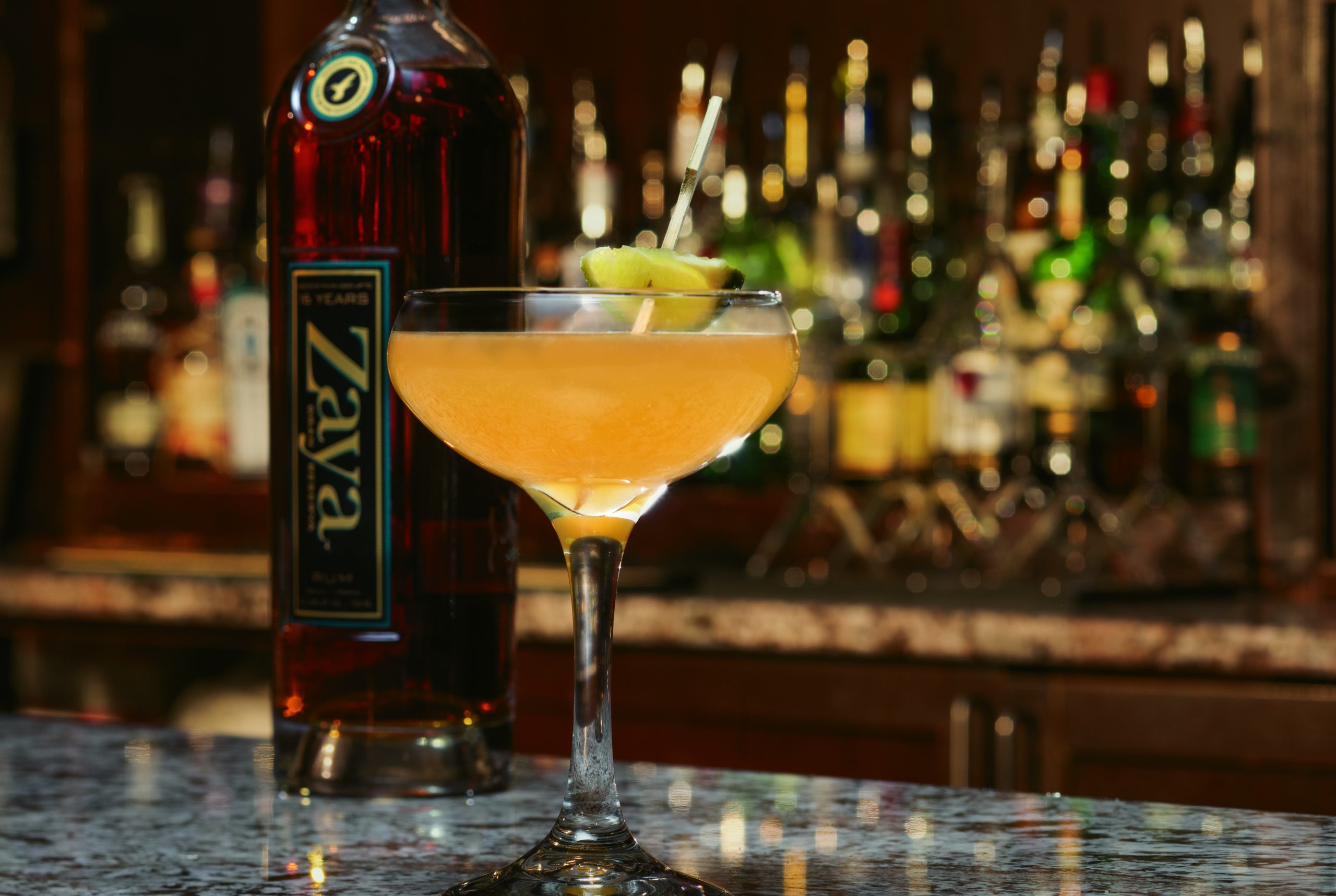
“Tiki drinks can be incredibly complex,” says Hernan Martinez, a certified sommelier and managing partner at Hampton Street Vineyard in Columbia. “They require a lot of different ingredients and take a long time to put together. But when made correctly they’re delicious.”
Though interest in frozen daiquiris also plummeted with the Tiki trend, the original drink, a simple concoction of rum, lime juice, and a bit of sugar that was made famous by Ernest Hemingway, stayed above the fray. It became a classic cocktail in its own right, alongside the whiskey sour and sidecar. Spencer Shealy, head bartender at Tombo Grille, notes that good rums take well to these simple preparations. “I’ve noticed that some people think rum means a sweet drink and a hangover, but that’s not the case,” she says. “It pairs with pretty much anything.”
Perhaps propelled by trendy speakeasies and classic stirred cocktails that used only a few ingredients, the early aughts brought interest in “sipping spirits” such as aged whiskies and tequila, premium vodka, and vintage brandy, among others. Today, aged rum, unadorned, has taken its rightful place in the glass.
That’s because aged rum is an entirely different animal than the bottle of Bacardi sitting in your liquor cabinet. Light rum, like Bacardi, has a subtle flavor and was made to be mixed; flavored rums also fall into this category. Spiced rum, which is traditionally flavored with vanilla, caramel, and Christmas spices, is also made to be mixed, though newer expressions, with notes of juniper, black pepper, and ginger, can be sipped neat. “We’ve added Breckenridge spiced rum, which is made in Colorado, to our list, and our guests really seem to enjoy it,” says Wilson. “It’s got notes of cinnamon-dipped green apples and dark chocolate along with molasses and vanilla.”
Deeply colored and richer than white rum, blackstrap rum has a bit of molasses — and often caramel coloring — added. It’s quite sweet, but can have a bit of a dark edge. Rhum agricole, made from freshly pressed cane juice instead of molasses, is a bit funky, grassy, and vegetal. It’s the preferred rum in Ti’ Punch, a potent combination of rhum agricole with a drop of sugar and a squeeze of lime that’s served in tiny glasses throughout the French Caribbean.
But the rums that are catching everyone’s attention these days are aged rums, which offer a full menu of flavors, including notes of caramel, raisin, vanilla, spices, dried fruit, and butterscotch. “Aged rum is rich, like bourbon, but a bit thicker, so it coats your mouth,” says Hernan, who discovered his love of rum when he was managing a well-known cocktail bar in Brooklyn, New York. “Bourbon drinkers are often surprised at how much they enjoy it.”
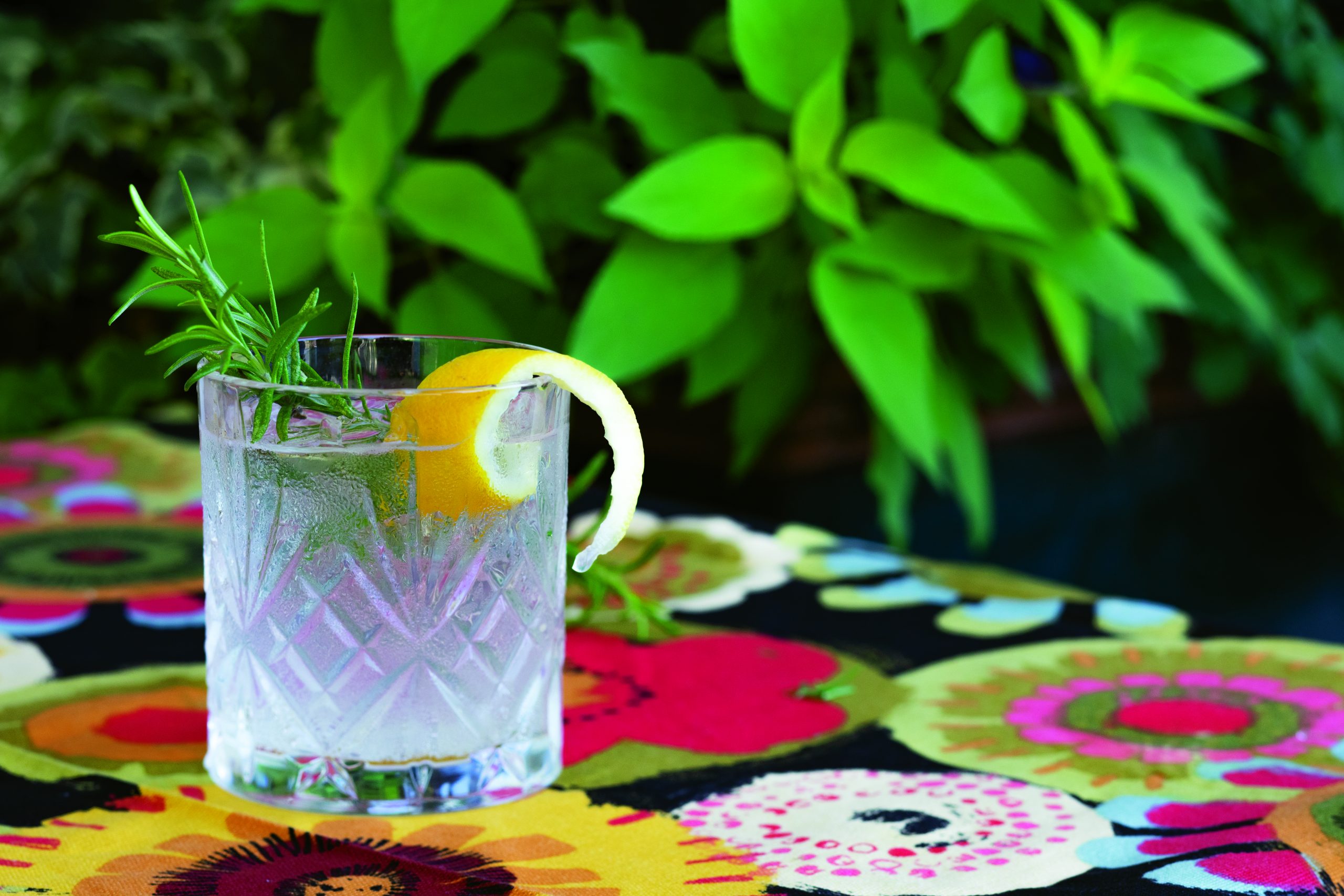
Cristóbal Srokowski, a global brand ambassador for Ron Abuelo, which has existed since 1908 and has been producing alcohol in Panama by the same family since the 1930s, agrees. “People began looking at rum as a premium and luxury spirit about 15 years ago when whiskey drinkers began to get interested in the richness of rum,” he says. “It’s easier to drink than whiskey because it’s smoother; it’s also more complex.”
According to Cristóbal, the parallels between top-shelf whiskey and aged rum continue into production. “Like the best whiskies, the best rums are made very precisely. Ron Abuelo grows its own sugar cane; during aging, we also think that the Panamanian climate comes into play, much the same way Kentucky’s climate affects bourbon,” he says. Most aged rums spent time in various barrels. Ron Abuelo uses different barrels for its various rums, including charred oak for the velvety Two Oaks bottling and Spanish sherry casks for Oloroso, which impart structure to the finished rum.
“Rum is pushing the boundaries of flavor,” he says. “It’s delicious by itself or as the base for classic cocktails like an Old-Fashioned, Negroni, or Manhattan. The possibilities are endless.”

Daiquiri
Hernan says that this very simple drink showcases rum wonderfully. “You can use any type of rum and it will change the drink substantially,” he says. “The drink itself originated in Cuba in 1896 and is attributed to Jennings Cox, who was an American engineer working there.”
2 ounces gold rum, or your favorite rum
1 ounce freshly squeezed lime juice
1 ounce simple syrup
Place all ingredients in an ice filled shaker and shake until blended and cold. Strain into a martini glass.
Rosemary Rum Punch
Courtesy of Tombo Grille
2 ounces white rum
½ ounce rosemary simple syrup
½ lime, squeezed
Ginger beer
Combine rum, simple syrup, and lime in a shaker. Shake well and pour over ice. Top with ginger beer and garnish with a rosemary sprig. Enjoy!
Palmetto Sour
Surprise! South Carolinians drink more Grand Marnier, an orange-based liqueur from France, than residents from any other state. “This is Hampton Street Vineyard’s own cocktail and is a very loose variation of a classic cocktail from 1892 called the Delicious Sour,” says Hernan. “We wanted to have a drink that showcased Grand Marnier since it’s such a popular spirit in South Carolina.”
2 ounces Plantation 3 Star Rum
½ ounce Grand Marnier
¾ ounce lemon juice
½ ounce simple syrup (made by mixing equal parts sugar into water until the sugar is dissolved)
1 egg white
Place all ingredients in an ice-filled shaker and shake until blended and cold. Strain into a martini glass.
Strawberry and Basil Mojito
Tombo Grille’s Spencer Shealy created this riff on a traditional mojito as a tasty way to use local strawberries. “Just don’t annihilate the limes as you muddle,” she says. “Gentle pressure will give balanced flavor without releasing the bitter oil in the pith.” Don’t skip the black pepper garnish. It may sound odd, but it rounds out the sweetness of the drink.
2 ounces of your favorite non-flavored rum
1 whole lime
2 ripe strawberries
2 fresh basil leaves
Club soda
Dash simple syrup
Freshly ground black pepper
Place several cubes of ice into a shaker. Squeeze in the lime, then drop in one of the halves, along with the rum, strawberries, simple syrup, and the basil leaves. Muddle gently, shake to blend, then strain into an ice-filled large rocks glass. Top with club soda, then a grind of black pepper. Garnish with a strawberry and a basil leaf. Note: to make a traditional mojito, skip the strawberries and substitute 3 mint leaves for the basil. Garnish with a lime wheel and a sprig of mint.

Jungle Bird
“This cocktail is one of my favorites,” says Hernan. “It mixes two ingredients that you wouldn’t necessarily think would mix well: blackstrap rum and Campari. Blackstrap is a very rich and sweet expression of rum that is able to tame the bitter aspects of the Campari. To that combination you add tropical notes of pineapple and lime and a star is born. The drink was created in Kuala Lumpur at the Aviary Bar in the Hilton Hotel in 1978.”
2 ounces blackstrap rum
¾ ounce Campari
1 ounce pineapple juice
½ ounce freshly squeezed lime juice
½ ounce simple syrup
Combine all ingredients in an ice-filled shaker. Shake gently, then strain into an ice-filled large rocks glass.

Mai Tai
Courtesy of Tombo Grille
1½ ounces spiced rum
1½ ounces coconut rum
1 teaspoon grenadine syrup
3 ounces pineapple juice
2 ounces orange juice
Combine ingredients in a shaker with ice and shake well. Strain over ice and enjoy!
San Isidro
Simple but full-flavored and refreshing, this cocktail uses Ron Abuelo Seven-Year Rum, which adds depth and balance to the finished drink. Courtesy of Cristóbal Srokowski
1½ ounces Ron Abuelo 7 Años Rum
1 ounce passion fruit liqueur
¾ ounce freshly squeezed lime juice
Ginger beer
Combine rum, liqueur, and lime juice in an ice-filled shaker. Shake gently, then strain into an ice-filled large rocks glass. Top with ginger beer.
Panama Manhattan
Ron Abuelo 12 Year Rum imparts rich flavors of vanilla, dried fruit, tobacco, and chocolate, while rich Carpano Antica vermouth adds comforting hints of fig and dried cherry. Courtesy of Cristóbal Srokowski
2 ounces Ron Abuelo 12 Year Rum
1 ounce Carpano Antica vermouth
1 dash Angostura bitters
Combine all ingredients in an ice-filled shaker; stir or shake until cold. Strain into a martini glass and garnish with an Amarena cherry and a twist of grapefruit peel.


